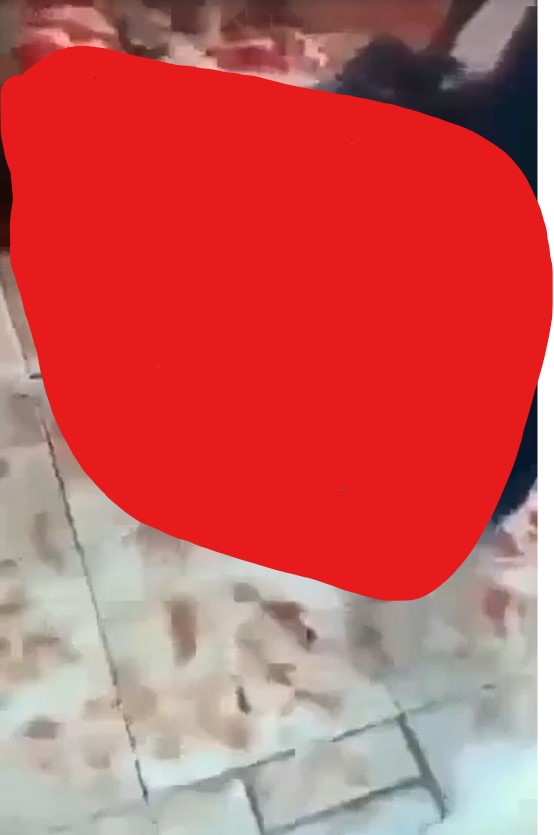Funkytown Video: Understanding The Disturbing Cartel Gore - What You Need To Know
Is there a visual representation of human cruelty so visceral, so disturbing, that it etches itself into the collective consciousness? The "Funkytown" video, a notorious piece of online content, undoubtedly fulfills this criteria, serving as a grim testament to the depths of human depravity and the chilling realities of cartel violence in Mexico.
The internet, a vast and often unregulated landscape, is home to an array of content. Within this digital space, certain videos emerge, captivating viewers not for their artistic merit or entertainment value, but for their capacity to shock and horrify. The "Funkytown" video, often referred to as "Funkytown Mexico," stands as a particularly grim example. This graphic video, which reportedly surfaced around 2016, depicts the brutal torture and murder of an individual, allegedly by members of a Mexican drug cartel. The videos very existence raises disturbing questions about the nature of violence, its dissemination, and its impact on those who encounter it.
The videos impact stems not only from the graphic nature of the violence it portrays, but also from the context in which it exists. These types of videos, often created and distributed by the cartels themselves, serve multiple purposes. One of the primary motives is the brutal tactic used by cartels to assert dominance over rivals and instill fear in local communities.
The "Funkytown" video emerged as a dark and horrifying representation of the violence tied to Mexican drug cartels. The video is a stark illustration of the brutality that defines the ongoing drug war in Mexico. It serves as a chilling reminder of the human cost of this conflict, where violence is not only a tool but also a spectacle.
The man is seen lying on the ground with his arms and legs tied up with what appears to be an extension cord or plastic wire. The victim is alive, conscious, and is being tortured in the worst ways possible. Eventually they slit his throat and he dies. The name "Funkytown" was given to the video because the song "Funkytown" is audibly heard in the final 10 seconds of the gory clip.
These videos, like "Funkytown," are often deliberately created and disseminated to amplify the cartels' power, intimidate rivals, and sow fear among the populace. They are a form of psychological warfare, designed to break the will of opponents and keep communities under control. They are also a form of propaganda, a brutal tactic to assert dominance and instill fear.
The "Funkytown" video is a potent example of this phenomenon, capturing the harrowing realities of cartel violence in a raw and unfiltered manner. The video, posted to social media, shows a group of individuals involved in the brutal act, which is purported to be members of a certain cartel. While the exact identities of those involved and the specific circumstances surrounding the video remain shrouded in uncertainty, its impact is undeniable.
Such videos are a symptom of a larger problem: the ongoing drug war in Mexico, a conflict marked by extreme violence and a disregard for human life. The cartels operate with impunity in many areas, using fear and intimidation to maintain their power and control. The rise of these gruesome videos reflects the escalating brutality of this conflict and the lengths to which these criminal organizations will go to achieve their goals.
The video's origins are murky, its authenticity difficult to definitively confirm. What is known is that it depicts a horrific act of violence, the torture and murder of a human being. The victim is shown in a state of extreme vulnerability, bound and helpless as the perpetrators inflict their cruelty. The graphic nature of the violence, the prolonged suffering, and the evident lack of empathy all contribute to the video's disturbing impact.
The widespread circulation of such content raises serious ethical questions. What is the responsibility of those who create, share, or view these videos? How do they affect individuals' perception of violence and human suffering? What measures can be taken to prevent the spread of this type of content and mitigate its harmful effects?
The origins of the "Funkytown" video are unclear. However, it's widely believed that it was created as a form of propaganda or intimidation, a brutal tactic used by cartels to assert dominance over rivals and instill fear in local communities. The exact identity of the victim remains unknown, and the circumstances surrounding the event are unclear. The videos impact stems from the graphic nature of the violence it portrays and the context in which it exists.
The video's existence highlights the complex and often disturbing nature of the internet. It is a space where information, both factual and fabricated, can be disseminated with ease and speed. It is a place where individuals can share their experiences, connect with others, and express themselves freely. Yet, it is also a place where harmful and exploitative content can flourish. The challenge lies in navigating this digital landscape, recognizing the risks, and taking steps to protect ourselves and others from the potential harm it can cause.
There's no definitive information about the victim's background or the exact reasons for the cartel's actions in the "Funkytown" video. The video's main purpose seems to be to demonstrate power and intimidate rivals. The gruesome nature of the video, with the victim alive during the torture, significantly amplifies its impact.
It is widely believed to have been created as a form of propaganda or intimidation, a brutal tactic used by cartels to assert dominance over rivals and instill fear in local communities. The cartel's motivations are complex and often rooted in power, control, and the desire to send a message to both rival groups and the local population. The graphic nature of the video is intended to create fear and discourage resistance, reinforcing the cartels' dominance.
Videos like Funkytown are not isolated incidents. They are part of a disturbing trend, with cartels regularly recording and uploading videos of their acts of violence, including torture and killings of rival cartel members, online. These videos serve as a form of communication, broadcasting messages of power, fear, and dominance. This practice underscores the cartels' impunity and their willingness to engage in extreme violence as a means of control.
The "Funkytown" video is a grim example of the violence associated with Mexican drug cartels. These videos circulate online, depicting horrific acts of torture and murder. The cartels produce these videos as a form of propaganda, intended to intimidate rivals and instill fear. The video is named "Funkytown" because the song "Funkytown" is audibly heard in the final moments of the video.
The "Funkytown" video is a particularly disturbing piece of content, circulating online, and known for its graphic depiction of violence. The video's impact is amplified by the fact that the victim is alive and conscious during the torture, making it particularly traumatic for viewers. Such videos are a brutal tactic used by cartels to assert dominance over rivals and instill fear in local communities.
The video's impact stems not only from the graphic nature of the violence it portrays, but also from the context in which it exists. It is a reminder of the ongoing drug war in Mexico, a conflict that has claimed countless lives and left a trail of devastation in its wake. The video serves as a stark illustration of the brutality that defines this conflict, where violence is not only a tool but also a spectacle. Such videos are often deliberately created and disseminated to amplify the cartels' power, intimidate rivals, and sow fear among the populace.
The "Funkytown" video is a stark example of the extreme violence associated with the Mexican drug cartels. The video has been circulating on the internet since around 2016, depicting the torture and killing of an individual. The video's impact stems from the graphic nature of the violence it portrays and the context in which it exists. Videos that show a live victim being tortured in the worst ways possible are the ones that traumatize people.
The video has been around forever, and it was obviously cartel related. The name "Funkytown" was given to the video because the song "Funkytown" is audibly heard in the final moments of the video. The video's existence highlights the complex and often disturbing nature of the internet.
In fact, these videos serve multiple purposes. They are used as a form of propaganda, a means of intimidating rival cartels and the general public. The purpose of these videos is not to provide entertainment but to instill fear. The fact that the victim is shown being tortured while still alive further enhances the impact of the video.
The video is a stark reminder of the violence perpetrated by Mexican drug cartels. The gruesome videos existence underscores the dangers of the internet and the importance of digital responsibility.
The video is a manifestation of the wider crisis of violence in Mexico, where drug cartels operate with impunity, leaving a trail of suffering and fear. The impact of these videos is magnified by their graphic and disturbing content. The video's name comes from the song "Funkytown," which is heard in the final moments of the video.
In addition to the direct impact on viewers, these videos also contribute to a broader culture of violence and desensitization. By constantly exposing individuals to graphic and disturbing content, they can desensitize them to violence, making it more acceptable or normal. This can have serious consequences for individuals and society as a whole.
The video itself is a testament to the brutality of the Mexican drug cartels and serves as a reminder of the violence that continues to plague parts of Mexico. The graphic depiction of violence in the video underscores the urgent need for action to address the root causes of the drug war and to bring an end to the suffering it inflicts. The video serves as a stark reminder of the devastating consequences of unchecked crime and the importance of upholding human rights.


